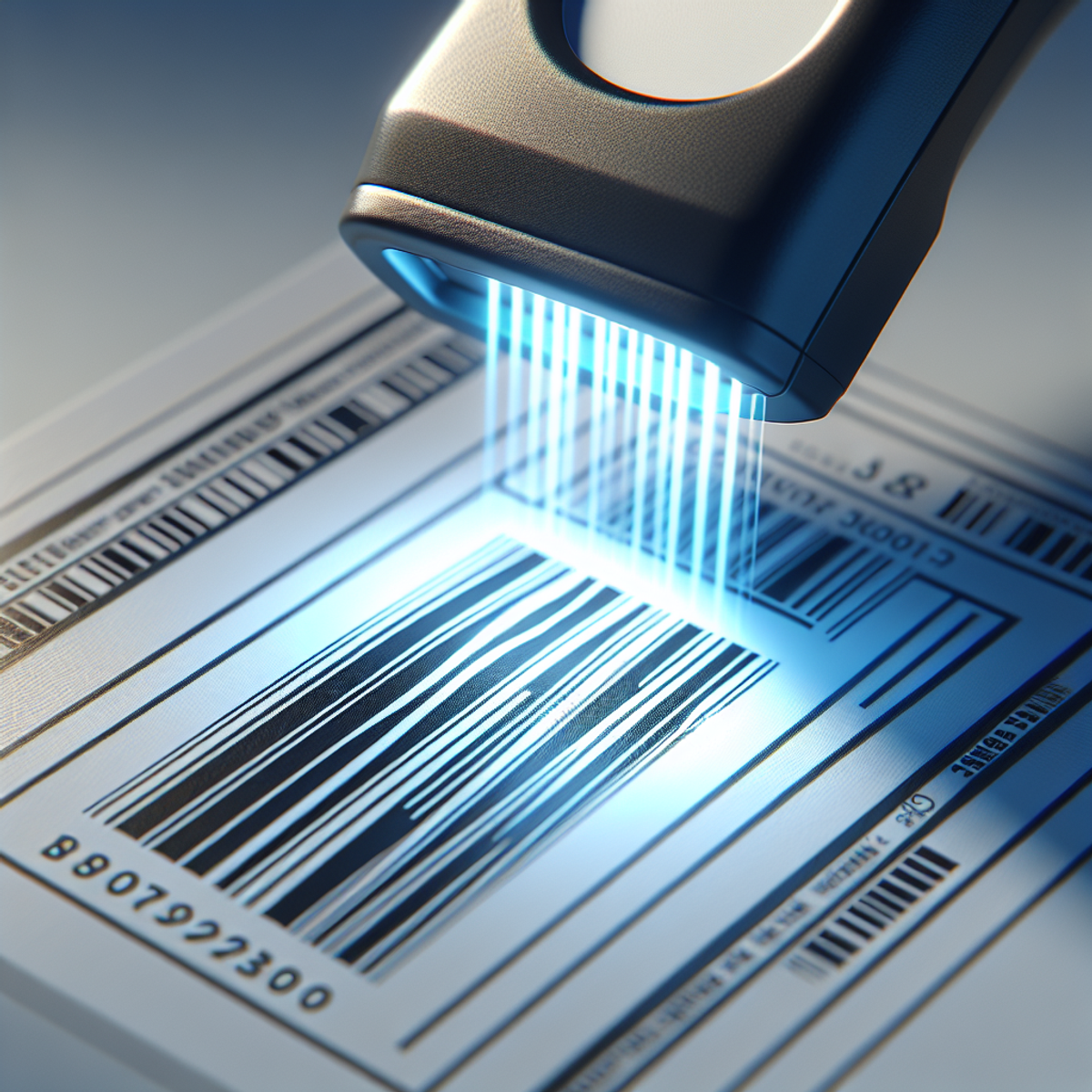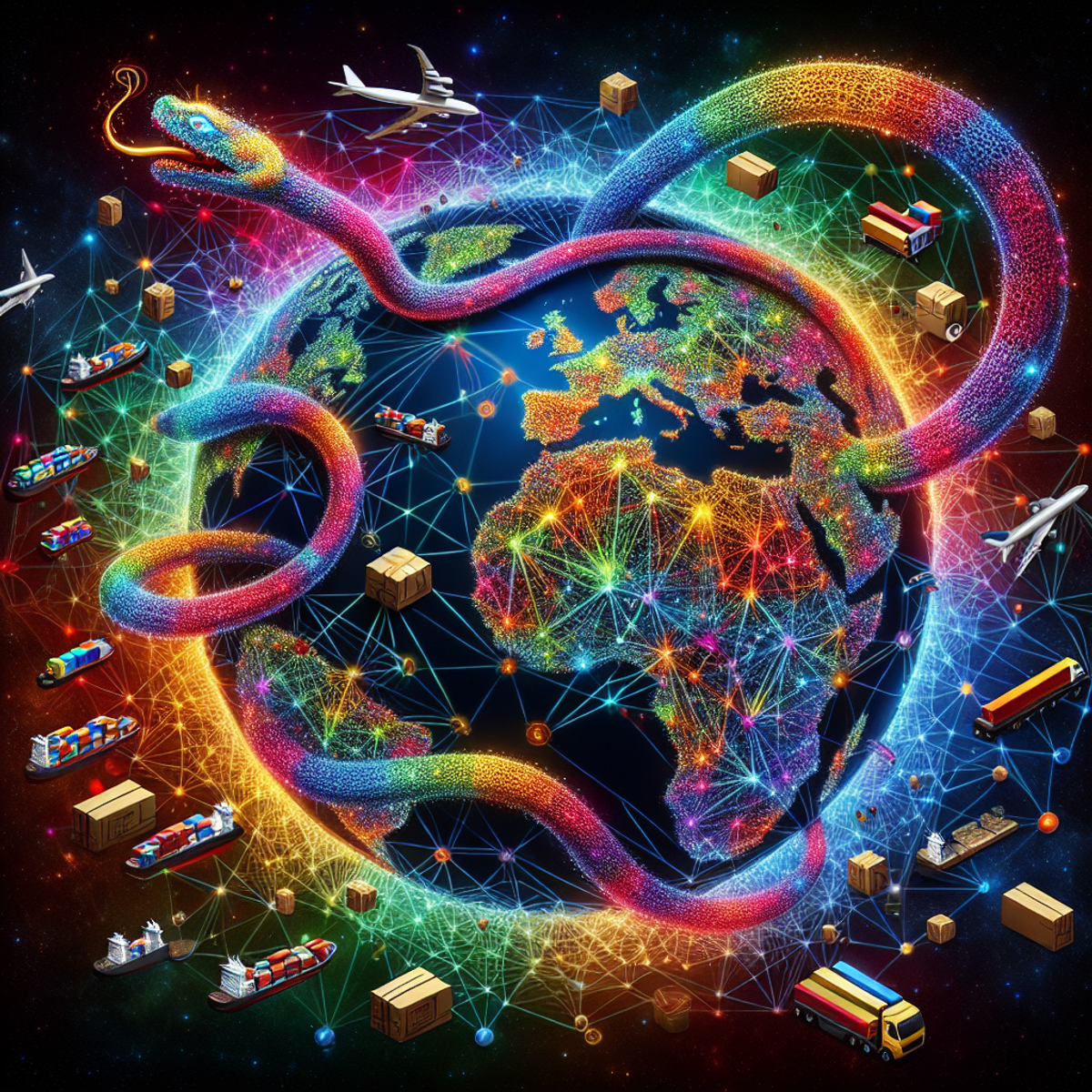Python for Supply Chain Traceability

Python for Supply Chain Traceability
Introduction
Supply chain traceability is a critical aspect of modern supply chain management. It refers to the ability to track and trace the movement of products and their components across the supply chain. This ensures transparency, accountability, and quality control throughout the entire process. The use of Python, a versatile and powerful programming language, has significantly enhanced supply chain traceability in recent years.
Definition of Supply Chain Traceability
Supply chain traceability encompasses the ability to identify and trace the path of products, parts, and materials from origin through production to distribution and consumption. It involves capturing and recording relevant data points at each stage of the supply chain, enabling stakeholders to access accurate information about the flow and transformation of goods.
Importance of Traceability in Supply Chain Management
Traceability plays a crucial role in ensuring product quality, safety, and compliance with regulations. It enables swift responses to potential issues such as product recalls or quality deviations by quickly identifying affected batches or shipments. Moreover, it fosters consumer trust by providing visibility into the provenance and handling of products.
Role of Python in Enhancing Supply Chain Traceability
Python has emerged as a go-to tool for enhancing supply chain traceability due to its versatility, extensive libraries for data analysis and manipulation, and ease of integration with other technologies. Its capabilities enable organizations to leverage advanced analytics, machine learning algorithms, and application development for comprehensive traceability solutions. By utilizing Python, businesses can achieve real-time insights, predictive analytics, and seamless data connectivity across their supply chains.
Python for Supply Chain Traceability
Supply chain traceability is a critical aspect of modern supply chain management. It involves tracking and documenting the movement of products and materials throughout the supply chain to ensure transparency, accountability, and compliance with regulations. Python, a versatile programming language, plays a vital role in enhancing supply chain traceability by providing powerful tools for data analysis, algorithm development, and application building.
1. Technologies for Supply Chain Traceability
Python integrates seamlessly with various technologies that are essential for effective supply chain traceability. Some of these technologies include:
RFID (Radio Frequency Identification)
Python can be used to develop applications that read RFID tags attached to products or materials. By analyzing the collected data, Python algorithms can provide insights into the location and movement of goods within the supply chain.
Barcodes
Python has libraries such as pyzbar that enable the decoding and analysis of barcodes. This allows for easy identification and tracking of products using barcode scanning technology.
GPS (Global Positioning System)
Python can utilize GPS data to track the real-time location of vehicles or shipments in the supply chain. This information can be used to monitor delivery routes, estimate arrival times, and optimize logistics operations.
2. Python Algorithms for Analyzing Supply Chain Data
Python offers a wide range of libraries and frameworks that facilitate the analysis of supply chain data. These algorithms can extract valuable insights from large datasets, enabling supply chain managers to make informed decisions. Some notable Python libraries for data analysis include:
NumPy
NumPy provides efficient numerical computing capabilities in Python. It enables operations on large arrays or matrices, making it ideal for processing large-scale supply chain data.
Pandas
Pandas is a powerful library for data manipulation and analysis. It provides easy-to-use data structures such as DataFrames, which allow for efficient handling and transformation of supply chain data.
Scikit-learn
Scikit-learn is a popular machine learning library in Python. It offers various algorithms for tasks such as clustering, classification, and regression. These algorithms can be applied to supply chain data to identify patterns, predict demand, or detect anomalies.
3. Building Python Applications for End-to-End Traceability
Python's versatility extends beyond data analysis to application development. With frameworks like Flask and Django, supply chain professionals can build robust web-based applications that enable end-to-end traceability. These applications can provide functionalities such as:
Product tracking
Python applications can track the movement of products across the entire supply chain, allowing stakeholders to monitor their location and status in real-time.
Traceability documentation
Python applications can generate comprehensive traceability reports that document the origin, production process, transportation details, and other relevant information about products or materials.
Supplier management
Python applications can help manage supplier relationships by providing tools for verifying compliance with quality standards, ethical sourcing practices, and regulatory requirements.
4. Addressing Challenges in Implementing Python-based Traceability Systems
Implementing Python-based traceability systems may present challenges that need to be addressed. Some common challenges include:
Data integration
Supply chain data is often scattered across multiple systems or databases. Integrating these data sources into a unified Python-based solution may require careful planning and data transformation.
Data quality and accuracy
Accurate and reliable data is crucial for effective supply chain traceability. Implementing processes to ensure data quality and accuracy is essential when developing Python-based traceability systems.
System scalability
As the supply chain grows in complexity and volume of data, Python-based traceability systems must be scalable to handle increasing demands. Designing scalable architectures and optimizing algorithms become critical considerations.
Python plays a pivotal role in enhancing supply chain traceability by leveraging technologies like RFID, barcodes, and GPS, providing powerful algorithms for data analysis, facilitating the development of web-based applications, and addressing challenges in implementation. Its versatility and extensive library ecosystem make it a valuable tool for achieving end-to-end traceability in the supply chain.
1. Technologies for Supply Chain Traceability
In the world of supply chain traceability, different technologies play a crucial role in enabling clear visibility and openness from start to finish. These technologies, when used with Python, can greatly improve the ability to track products throughout the supply chain. Let's explore some important technologies that are key in achieving strong supply chain traceability.
Azure Cosmos DB for Gremlin
Azure Cosmos DB is a NoSQL database service provided by Microsoft. It offers support for Gremlin API, which is particularly beneficial for implementing graph-based data models. When used in supply chain traceability, Azure Cosmos DB with Gremlin API allows for the efficient storage and retrieval of interconnected data points related to product origin, batch information, and logistics details. By using Python's compatibility with Azure services, developers can easily incorporate Azure Cosmos DB into their traceability solutions and perform advanced data analysis to track the movement of goods across the supply chain network.
Blockchain-based Platforms and Smart Contracts
Blockchain technology has become very popular in ensuring trust and transparency in supply chains. By using Python for blockchain integration, companies can create unchangeable records that document every transaction and movement of goods. Smart contracts, created using languages like Solidity or Vyper (for Ethereum-based blockchains) or Chaincode (for Hyperledger Fabric), enable automatic enforcement of predefined business rules. Python's wide range of libraries and frameworks make it easy to interact with blockchain networks, allowing smooth integration of decentralized traceability solutions.
QR Code Technology
QR codes have become a common tool for storing digital information on physical products or packaging. When combined with Python, QR code technology becomes a powerful tool for traceability efforts. Companies can generate unique QR codes for each product item and link them to relevant information such as production details, supplier data, and quality certifications. With Python's image processing capabilities through libraries like OpenCV and ZBar, scanning and decoding QR codes becomes a streamlined process, enabling instant access to product origin information.
Internet of Things (IoT)
IoT devices have transformed supply chain operations by providing real-time monitoring and data gathering capabilities. Python's compatibility with IoT platforms such as AWS IoT Core or Azure IoT Hub allows organizations to collect sensor data from different points along the supply chain. This data includes factors like environmental conditions, location tracking, and handling specifications. By using Python's analytical abilities, businesses can extract useful insights from IoT-generated data to ensure adherence to quality standards and trace the journey of products from beginning to end.
By adopting these advanced technologies together with Python's flexibility, businesses can create comprehensive traceability systems that promote responsibility and honesty throughout the supply chain network.
2. Python Algorithms for Analyzing Supply Chain Data
In supply chain management, Python offers powerful algorithms for analyzing large amounts of data to extract valuable insights. These algorithms play a crucial role in improving traceability by helping organizations make informed decisions and optimize their processes. Here's how Python algorithms contribute to analyzing supply chain data:
1. Data Analysis
Python provides a variety of libraries such as Pandas, NumPy, and SciPy, which are widely used for data analysis. These libraries have features for manipulating, cleaning, and transforming data, allowing supply chain professionals to extract useful information from complex datasets. By using these tools, businesses can:
- Identify patterns, trends, and anomalies in their supply chain data
- Improve traceability and decision-making
Example: By using Pandas library in Python, businesses can easily filter out irrelevant data and focus only on the key metrics that matter for their analysis.
2. Pattern Recognition
Python's machine learning capabilities enable supply chain professionals to use advanced techniques for recognizing patterns in data. Through algorithms like clustering, classification, and anomaly detection, organizations can automatically identify irregularities or potential risks within their supply chain operations. This proactive approach to pattern recognition improves traceability by detecting deviations from expected norms and triggering timely actions.
Example: By applying clustering algorithm on historical sales data, businesses can group similar products together based on their demand patterns. This information can then be used to optimize inventory management and ensure availability of popular items.
3. Machine Learning
Python's strong support for machine learning empowers supply chain stakeholders to create predictive models that:
- Forecast demand
- Detect fraud
- Optimize inventory management
- Mitigate supply chain disruptions
By integrating machine learning algorithms into their operations, businesses can gain deeper insights into the behavior of their supply chain networks, leading to improved traceability and risk mitigation.
Example: By using a machine learning model trained on historical shipment data, businesses can predict the likelihood of delays or damages for future shipments. This information can help them take proactive measures to prevent potential issues and ensure smooth operations.
Python's algorithms play a vital role in transforming raw supply chain data into actionable intelligence. Whether it's identifying inefficiencies in the transportation process or predicting demand fluctuations, Python equips organizations with the tools to drive continuous improvement and transparency across their supply chains. By using Python algorithms for data analysis, pattern recognition, and machine learning, businesses can enhance their traceability efforts effectively.
The versatility of Python's algorithms empowers organizations to derive meaningful insights from diverse datasets while adapting to evolving supply chain dynamics. As the volume and complexity of supply chain data continue to grow, Python remains an indispensable tool for unlocking the full potential of traceability initiatives.
3. Building Python Applications for End-to-End Traceability
When it comes to building Python applications for end-to-end traceability in supply chain management, there are several important factors to consider. In this section, we will explore the key aspects of using Python to create strong and efficient traceability applications.
Cloud Computing for Scalability
One of the main advantages of using cloud computing services is that they can greatly improve the scalability and flexibility of Python applications for supply chain traceability. Platforms like Amazon Web Services (AWS), Microsoft Azure, and Google Cloud offer a wide range of tools and resources specifically designed to support the development and deployment of scalable traceability solutions. By making use of these cloud services, supply chain stakeholders can easily handle large amounts of data, perform real-time analysis, and ensure that their traceability applications run smoothly.
Decentralized Platforms for Enhanced Transparency
Another important consideration when building Python-based traceability applications is the use of decentralized platforms, such as blockchain technology. By incorporating blockchain into these applications, organizations can add an extra layer of transparency and security to their supply chain processes. Blockchain allows for the creation of permanent and transparent records of transactions, which can help improve visibility across the entire supply chain network. By integrating Python with blockchain frameworks like Ethereum or Hyperledger, organizations can build decentralized traceability applications that offer unmatched data integrity and auditability.
Data Management and Integration
Effective data management is crucial in the development of comprehensive traceability applications using Python. Fortunately, Python provides us with powerful libraries such as Pandas, NumPy, and SciPy that make it easy to work with different types and sources of data within the supply chain ecosystem. Whether it's sensor data or information from enterprise resource planning (ERP) systems, Python gives developers the ability to seamlessly integrate and process diverse data streams, laying the groundwork for end-to-end traceability throughout the entire supply chain.
User Interface Design and Interactivity
Another important aspect to consider when building Python applications for traceability is the design of user interfaces (UI). After all, it's essential for these applications to be user-friendly and intuitive in order to ensure widespread adoption and usability. Thankfully, Python offers a variety of frameworks like Django, Flask, and Dash that empower developers to create interactive dashboards, visualization tools, and web-based interfaces for end users. By combining Python application development with a focus on user experience (UX) design principles, organizations can deliver traceability solutions that are both powerful and easy to use for users in different roles within the supply chain ecosystem.
Security Considerations and Compliance
Last but certainly not least, it's crucial to prioritize security measures and regulatory compliance when building Python applications for end-to-end traceability in supply chains. This means implementing strong authentication mechanisms, encryption standards, and access controls within our Python-based applications to protect sensitive supply chain data from unauthorized access or tampering. Additionally, it's important to ensure that our traceability applications adhere to industry-specific regulations such as GDPR (General Data Protection Regulation) or FDA requirements in order to meet essential compliance standards.
By keeping these considerations and best practices in mind, organizations can leverage the power of Python
4. Addressing Challenges in Implementing Python-based Traceability Systems
Implementing Python-based traceability systems in supply chain management can bring numerous benefits, but it also comes with its own set of challenges. It is crucial to address these challenges effectively to ensure the successful implementation and utilization of Python for traceability. Let's explore some common challenges and their solutions:
1. Integration Complexity
One of the major challenges is integrating Python-based traceability systems with existing supply chain technologies and databases. The complexity arises from different data formats, data sources, and incompatible systems.
Solution: To overcome integration complexity, consider using middleware platforms or APIs that facilitate seamless data exchange between different systems. These tools act as intermediaries and enable smooth integration between Python-based traceability applications and existing supply chain technologies.
2. Data Quality Assurance
Inaccurate or incomplete data can lead to unreliable traceability information, compromising the effectiveness of the system. Ensuring data quality is essential to achieve accurate traceability throughout the supply chain.
Solution: Implement data validation mechanisms within the Python applications to verify the integrity and accuracy of incoming data. Use data cleansing techniques to eliminate inconsistencies and errors. Regularly validate and update master data to maintain high data quality standards.
3. Handling Product Irregularities
Supply chains often encounter product irregularities such as damaged goods, expired items, or counterfeit products. Detecting and handling such irregularities is vital for maintaining traceability and ensuring customer satisfaction.
Solution: Leverage machine learning algorithms within Python to analyze large volumes of supply chain data in real-time. Develop anomaly detection models that can identify potential product irregularities based on predefined parameters such as expiration dates, quality standards, or packaging variations.
4. Ensuring Data Security
With sensitive supply chain information being stored and processed within Python applications, ensuring robust data security measures is paramount to protect against unauthorized access or data breaches.
Solution: Implement encryption techniques to secure data at rest and in transit. Employ access controls and user authentication mechanisms to restrict unauthorized access. Regularly update security patches and conduct vulnerability assessments to identify and address potential security risks.
5. Data Loss Prevention
Unforeseen events such as system failures, power outages, or natural disasters can lead to data loss, impacting traceability efforts. Preventing data loss is crucial for maintaining uninterrupted traceability records.
Solution: Implement regular backups of the traceability database to prevent data loss during unexpected events. Explore cloud-based storage solutions that offer high availability and automatic backup capabilities. Conduct periodic disaster recovery drills to test the effectiveness of backup strategies.
By addressing these challenges, organizations can overcome barriers to implementing Python-based traceability systems effectively. These solutions enable businesses to improve supply chain transparency, reduce errors, enhance product quality, and strengthen customer trust.
Future of Supply Chain Traceability: Advancements with Python, AI, and Blockchain
Supply chain traceability is a critical aspect of modern business operations. As technology continues to advance, new tools and techniques are emerging that have the potential to revolutionize supply chain traceability. In this section, we will explore the future trends and advancements in this field, particularly focusing on the role of Python, AI, and blockchain.
1. Artificial Intelligence (AI) in Supply Chain Traceability
Artificial Intelligence has the potential to significantly enhance supply chain traceability by automating processes and improving data accuracy. Here are some ways AI can be applied:
- Predictive Analytics: AI algorithms can analyze historical data to predict future trends, enabling businesses to make proactive decisions. For example, AI-powered demand forecasting models can help companies optimize inventory levels and reduce waste.
- Image Recognition: AI can be used for image recognition to identify products or track shipments. This technology can automate quality control processes, ensuring that products meet predefined standards.
- Natural Language Processing (NLP): NLP can be utilized to extract valuable insights from unstructured data such as customer reviews or social media posts. By analyzing this data, businesses can identify potential issues or opportunities in their supply chain.
2. Blockchain Technology for Enhanced Traceability
Blockchain technology provides a decentralized and transparent platform for recording transactions and data. It has the potential to revolutionize supply chain traceability by ensuring immutability and transparency throughout the entire process. Here's how blockchain can enhance traceability:
- Secure Data Storage: Blockchain allows secure storage of transactional data across multiple nodes, eliminating the need for intermediaries and reducing the risk of data manipulation or fraud.
- Smart Contracts: Smart contracts are self-executing contracts with predefined conditions. They can automate various aspects of supply chain operations such as payments, delivery verification, and compliance checks.
- Provenance Tracking: With blockchain, every step of the supply chain can be recorded and verified, providing a clear audit trail. This enables businesses to track the origin, movement, and handling of products, ensuring authenticity and compliance.
3. Automation and Robotics
Automation and robotics are transforming supply chain operations by increasing efficiency and reducing human error. Here are some ways automation is enhancing traceability:
- Robotic Process Automation (RPA): RPA can automate repetitive and rule-based tasks, such as data entry or inventory management. By eliminating manual processes, businesses can reduce errors and improve data accuracy.
- Internet of Things (IoT): IoT devices can collect real-time data from various points in the supply chain, enabling businesses to monitor and track products throughout their journey. This data can be analyzed using Python algorithms to gain valuable insights.
- Autonomous Vehicles: Self-driving vehicles are becoming increasingly common in logistics operations. These vehicles can be equipped with sensors and GPS technology to track shipments, ensuring timely delivery and minimizing disruptions.
In conclusion, the future of supply chain traceability is promising with advancements in Python, AI, and blockchain technology. These technologies have the potential to automate processes, improve data accuracy, and provide end-to-end visibility across the supply chain. By leveraging these tools effectively, businesses can enhance traceability, reduce costs, improve customer satisfaction, and drive overall operational efficiency. The possibilities are endless, and it is crucial for businesses to stay updated with these emerging trends to remain competitive in the evolving landscape of supply chain management.
Conclusion
Encouragement to Explore Python's Capabilities
Python offers a wide range of libraries and tools that can significantly enhance supply chain traceability. Embracing Python for this purpose opens up a world of possibilities for streamlining operations, improving transparency, and ensuring compliance across the supply chain. As you delve into the realm of Python, you'll discover its potential to revolutionize the way traceability is achieved in supply chain management.
Crucial Role of Python Across Different Aspects of the Supply Chain
From data analysis to application development, Python plays a pivotal role in driving efficiency and accuracy throughout the supply chain. Its versatility allows for the seamless integration of various processes, making it an indispensable tool for achieving end-to-end traceability. Whether it's optimizing routes, analyzing inventory data, or developing custom traceability applications, Python empowers organizations to address their unique traceability needs with agility and precision.
In conclusion, "Python for Supply Chain Traceability" represents a powerful paradigm shift in how businesses approach traceability within their supply chains. By harnessing the capabilities of Python, organizations can elevate their traceability efforts to new heights, fostering greater trust and reliability throughout the entire supply chain ecosystem.
FAQs (Frequently Asked Questions)
What is the role of Python in enhancing supply chain traceability?
Python plays a crucial role across different aspects of the supply chain, from data analysis to application development, highlighting its versatility and importance in achieving end-to-end traceability.
What are some technologies used for supply chain traceability?
Technologies for supply chain traceability include Azure Cosmos DB for Gremlin, blockchain-based platforms, smart contracts, QR code technology, and IoT.
What are some examples of Python algorithms used for analyzing supply chain data?
Python algorithms are used for data analysis, pattern recognition, and machine learning in the context of analyzing supply chain data.
How can Python be utilized in building applications for end-to-end traceability?
Python can be utilized in building applications for end-to-end traceability through cloud computing, decentralized platforms, and data management.
What are some challenges in implementing Python-based traceability systems?
Challenges in implementing Python-based traceability systems may include solutions for product irregularities, quality compromises, and data loss.
What is the future of supply chain traceability with advancements in Python, AI, and Blockchain?
The future of supply chain traceability involves advancements in AI, blockchain, and automation to further enhance traceability processes.


Comments
Post a Comment